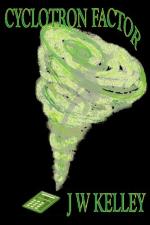|
This section contains 719 words (approx. 3 pages at 300 words per page) |

|
The cyclotron is a type of particle accelerator invented by physicist Ernest O. Lawrence (1901-1958) in 1930. The first working cyclotron was built by Lawrence and an assistant, M. Stanley Livingston, at the University of California, Berkeley, in 1931. Lawrence was awarded the 1939 Nobel Prize in physics for this pioneering achievement, which gave scientists direct experimental access to the atomic and subatomic world.
Particle accelerators produce a beam of fast-moving, electrically charged atomic or subatomic particles for use in fundamental research into the structure of nuclei, the nature of the nuclear forces, the interactions of elementary subatomic particles, and the creation and study of nuclei not found in nature. Of special interest are the nucleon rich nuclei (i.e., atomic nuclei with large numbers of protons and neutrons) found in the transuranic elements, so called because they are heavier (i.e. have a greater atomic mass) than uranium, the heaviest...
|
This section contains 719 words (approx. 3 pages at 300 words per page) |

|


